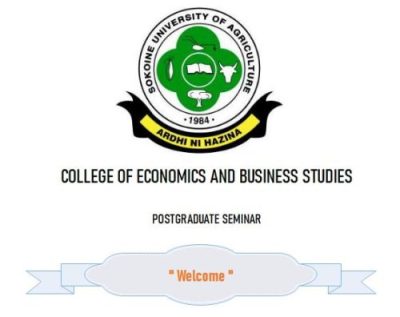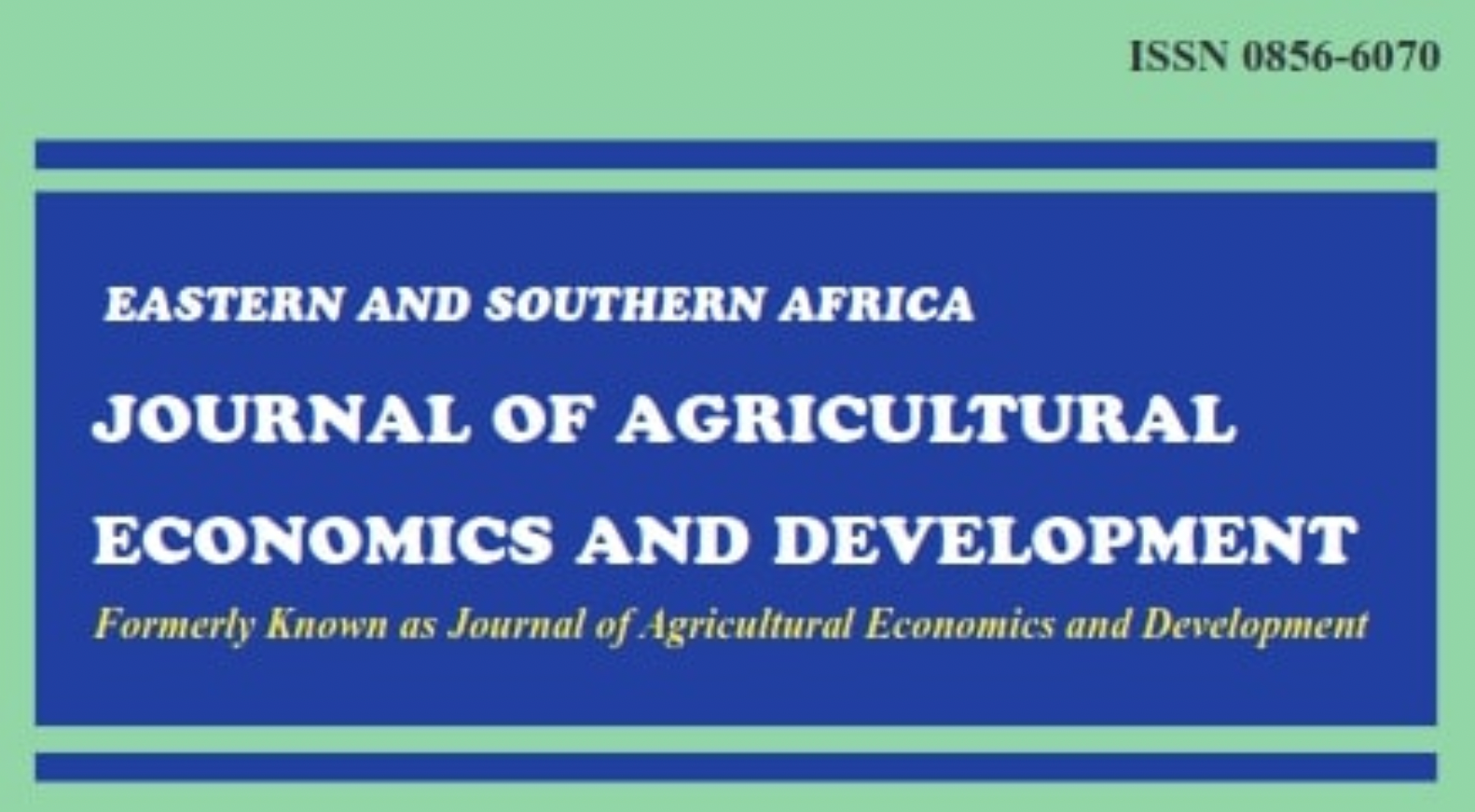
Congratulation to Dr. Ibrahim L. Kadigi for successfully defended his PhD thesis titled: “Risk Inclusion in Forecasting and Economic Feasibility Analyses of Staple Food Cereals in Tanzania: The Case of Maize, Sorghum and Rice” pursued at the School of Agricultural Economics and Business Studies COEBS, of Sokoine University of Agriculture (SUA).
Dr. Ibrahim L. Kadigi holds (MSc. Agricultural Economics) is currently a freelance researcher/consultant based at Soil-Water Management Research Programme, Department of Engineering Sciences and Technology.
He was supervised by Prof. Khamaldin D. Mutabazi,Dr. D. Philip Damas Dean of School and Dr. Sixbert K. Mourice. The defence was held on Tuesday, 6th October 2020 with five panellists; Prof. A. Isinika (Chairperson), Dr. J. Makindara (Internal Examiner)(Head of Department of Busines Management), Dr. D. Philip DamasDean of School (Supervisor), Dr. Roselyne Alphonce (Appointee of the Dean) and Dr. N. Seluhinga (Appointee of the Head).
Summary of the Thesis
Maize (Zea mays L.), rice (Oryza sativa), and sorghum (Sorghum bicolor L. Moench) are major staple food crops to the most population in Tanzania. The three crops provide the primary source of livelihood for the majority of rural farming households. Unfortunately, like for any other crops, some risks and uncertainties remain about the future productivity and profitability of these essential food crops. These uncertainties hinder the implementation of different strategies, agricultural policies, and plans set to achieve an agriculture revolution, hence impacting the decision of investment in agricultural technologies. The general object of this study was to apply a Monte Carlo Simulation Model (MCSM) which incorporates the randomness of the prices, yields, interest & rates, production costs and other stochastic variables to estimate the economic feasibility of the staple food crops for 7-years through 2025. Following the MCSM protocol, the Maize, Sorghum and Rice simulation model (MASORISIM) was developed for analysis. The study also evaluated the economic viability of proposed interventions aimed to minimize the risks and uncertainties in agricultural production. These interventions include the application of 40kg N/ha, an adjustment in plant population to 3.3 plants/m2, use of improved seeds and system of rice intensification (SRI). Two regions, namely Dodoma (semi-arid) and Morogoro (sub-humid), were included in the analysis.
The results on economic feasibility in terms of Net Present Value (NPV) revealed a probability of positive NPV for all the crops in Dodoma despite a higher relative risk for rice. The results in Morogoro presented a high probability of success for rice and sorghum with maize, indicating the highest relative risk and a 2.9% probability of negative NPV. On the proposed interventions for maize, the study finds that the use of improved plant population had the lowest annual net return with the application of 40kg N/ha fetching the highest return. Also, the study demonstrated a zero probability of negative net returns for farms using recommended rates of fertilizer for both sub-humid and semi-arid areas. The optimized plant population presented 16.4% to 26.6% probability of negatives net returns for semi-arid and 14.6% to 30.2% probability of negative net returns for sub-humid zones. The results for rice interventions show a 2% and zero probability of net cash income (NCI) being negative for partial and full SRI adopters, respectively. Meanwhile, farmers using local and improved seeds have 66% and 60% probability of NCI being negative, correspondingly. Rice farms which applied fertilizers in addition to improved seeds have a 21% probability of negative returns.
Although the results show a probability of positive NPV for the crops, the income generated by these crops is still low with high variabilities. These results help to inform policymakers and agencies promoting food security and eradication of poverty on the benefits of encouraging improved maize and rice farming practices in the country. Similar studies are needed to explore the potential of different interventions highlighted in the Agriculture Climate Resilient Plan (ACRP 2014 – 2019) for better decision-making. This study was conducted only in two regions, but similar works can be undertaken following the MCSM protocol to include other regions and more crops.



